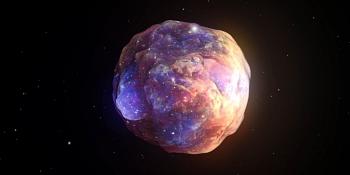The Universe is Currently Expanding 9% faster than the Early Universe
Early studies of the universe, have always confirmed that the earth should be expanding at one speed, however, in recent years, when astronomers measure the universe, they find a faster rate of expansion. This phenomenon has remained a conundrum to scientists.Humans have always sought to educate themselves on the wonders of the universe. Books, such as Astroglossary have been written to provide an invaluable reference for people who have interests in Astronomy.
According to Astronomy.com, for about a hundred years, astronomers have been aware of the fact that the universe is expanding. Astronomers such as Edwin Hubble were the firsts to observe that every distant galaxy that could be measured seemed to be moving away from Earth – and the farther they were, the faster they moved away.
More recent measurements of the expansion rate of the present universe using the Hubble Space Telescope have found that the current rate of expansion is 9% faster than the expansion rate of the early universe, as measured by the European Space Agency’s Planck spacecraft.
In the past, astronomers had said that the odds were something like 1 in 3,000 and that the disagreements were just a coincidence. But in a study that was released recently, scientists say they’ve refined the Hubble measurements, and have reinforced the idea that today’s universe is expanding faster than it was in the past. Now, the odds of a mistake have reduced to 1 in 100,000.
“At this point, something is definitely fishy,” writes Korey Haynes for Astronomy,“and astronomers need to understand why.”
It goes without saying that new experiments, need to be conducted, to explain this incongruity.
“The Hubble tension between the early and late Universe may be the most exciting development in cosmology in decades,” said Nobel Laureate and the project’s leader Professor Adam Riess, from the Space Telescope Science Institute and Johns Hopkins University, quoted on Sci-News.
Riess said this odd observation has been left lingering to a point that it could no longer be swept under the rug. “This mismatch has been growing and has now reached a point that is really impossible to dismiss as a fluke. This disparity could not plausibly occur by chance.”
Professor Riess and his team usedDrift and Shift (DASH), an efficient observing technique using Hubble as a ‘point-and-shoot’ camera to snap quick images of the bright stars. He says that for the first time, scientists believed they could get to the end of this, and resolve it once and for all.
“Previously, theorists would say to me, ‘It can’t be. It’s going to break everything.’ Now they are saying, ‘we actually could do this’,” Professor Riess said.
The scientists suspect that either dark matter or dark energy could be the cause of this discrepancy, but nothing has been concluded for sure yet. One thing is for sure though, this time, they are not giving up.
“This is not just two experiments disagreeing,” Riess explained in a press release. “We are measuring something fundamentally different. One is a measurement of how fast the universe is expanding today, as we see it. The other is a prediction based on the physics of the early universe and on measurements of how fast it ought to be expanding.”
To pursuean advanced knowledge of our universe and the way it works, visit Agora Books to purchase Astroglossary.
Comments
There are 0 comments on this post













